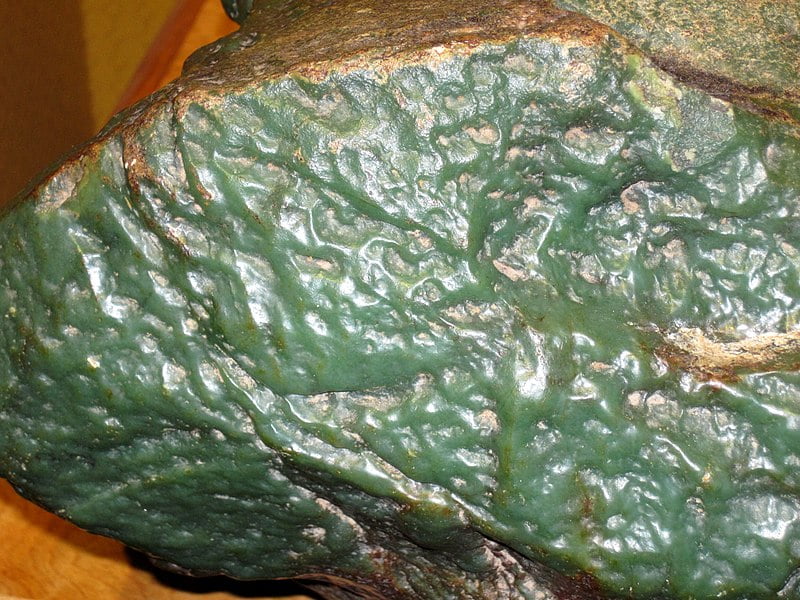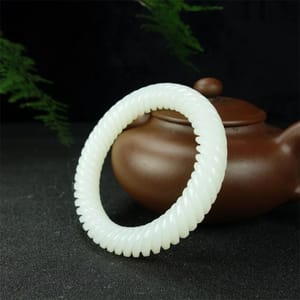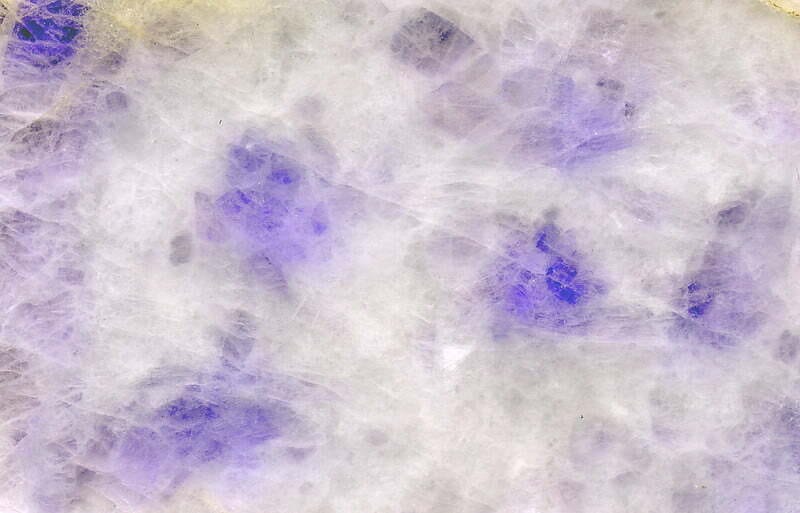Jade vs Jadeite vs Nephrite: What is the Difference?
Unfolding the mystery of jade vs jadeite vs nephrite, these three terms often intertwine, but they signify distinct varieties of this celebrated gemstone.
The simple answer to the question is that nephrite and jadeite are two different types gemstones and they are both considered jade.

The Two Types of Jade
Jade is not a single mineral, but a name given to two different minerals: nephrite and jadeite. Both are incredibly tough, making them ideal for carving intricate designs and jewelry, but they differ in their chemical compositions and physical properties.
Nephrite jade is a variety of the calcium and magnesium-rich mineral actinolite. It’s the more common type of jade and has been used for millennia across the world, in areas from China to New Zealand.
Jadeite, on the other hand, is a sodium and aluminium-rich pyroxene. It’s much rarer than nephrite and is found in fewer locations worldwide, with the most significant deposits in Myanmar.
Jadeite vs Jade
The terms “jade” and “jadeite” are often used interchangeably, but they refer to different materials. Jade is a generic term that encompasses both nephrite and jadeite, while jadeite refers to a specific mineral.
Jadeite is rarer, more colorful, and generally more valuable than nephrite, making it the preferred material for high-end jade jewelry, however some artists prefer nephrite jade for it’s unique appearance.
Shop For Jadeite
Jadeite vs Nephrite
When comparing jadeite jade and nephrite jade, several differences stand out. Jadeite is generally more colorful, with hues ranging from white to green, lavender, orange, and brown. Nephrite, on the other hand, is typically found in shades of green, although it can also occur in white, grey, and black, but can be found in other colors such as blue, depending on where it is from.
In terms of transparency, jadeite can range from completely opaque to semi-transparent, while nephrite is usually opaque to translucent. Jadeite also has a higher luster, appearing somewhat glassy, while nephrite has a more greasy or waxy luster.
Shop Our Nephrite Jade
The Differences in Value
The value of jadeite and nephrite also differs significantly. Jadeite is usually considered more valuable due to its rarity and the vibrant colors it can exhibit.
Nephrite, while less valuable, is still a beautiful gemstone that is appreciated for its rich history and cultural significance, particularly in China. High-quality nephrite, known as “Hetian jade,” can command high prices, especially when it exhibits a pleasing green color and a high degree of translucency. High quality nephrite can also come out of British Columbia, Wyoming, and California.
How to Identify Jade
Identifying jade can be tricky, especially for the untrained eye. Jadeite is often confused with nephrite due to their similar appearance. However, jadeite has a more granular structure and a higher refractive index, giving it a slightly more brilliant luster.
One of the most reliable ways to identify jade is through specific gravity testing, as jadeite has a higher specific gravity than nephrite. However, this test requires specialized equipment and should be performed by a professional gemologist. You can learn more about identifying jade on our page real vs fake jade.
Which Jade Is The Most Rare?
Among the two types of jade, jadeite is considered the more precious. Its rarity, combined with its vibrant colors and translucency, makes it highly sought after in the gemstone market. The most valuable jadeite is “imperial jade,” a translucent emerald-green jadeite that is prized for its intense color and clarity.

Which Holds More Value: Jadeite or Nephrite?
When evaluating jadeite vs nephrite in terms of value, it’s essential to recognize that several factors play a part. These include color, transparency, texture, and size. Jadeite, known for displaying a broader range of colors, including the sought-after emerald-green, usually holds a higher market value.
The most valuable jadeite has a vivid, even color and high transparency. Furthermore, the texture, denoting the arrangement and size of the jadeite crystals, plays a significant role in establishing its value. Jadeite that exhibits a fine texture—indicating densely packed, invisible-to-the-naked-eye crystals—boasts a smooth, lustrous surface that is highly desirable.
Often hailed as the high-quality jade, jadeite is lauded for its superior traits. However, this isn’t a definitive rule, as nephrite, if sourced properly, can yield high-quality specimens used in fine jewelry and artwork.
In a jadeite vs nephrite comparison, jadeite’s higher degree of transparency and wider color spectrum are noticeable. Jadeite’s robust hardness and density enhance its durability, making it resistant to wear and an exceptional choice for jewelry.
However, it’s important to remember that both jadeite and nephrite have unique qualities that contribute to their value, and choosing between them often depends on personal preference.
The Symbolic Significance of Jade
Beyond its physical properties, jade holds a deep symbolic significance, particularly in Asian cultures. It’s often associated with purity, nobility, and spiritual growth. In Chinese culture, jadeite is believed to possess protective qualities and is often used in amulets and talismans. You can learn more on our jade meaning page.
Different Colors of Jade
The color of jade can range from white to green and even to black. Each color has its own unique meaning and significance. Green, the most common color of jade, symbolizes life and growth. It represents harmony and can bring balance to an otherwise chaotic life. White jade stands for purity and serenity. It is often used for healing and is believed to help people let go of negative thoughts and emotions. Black jade is a protector stone, known for its power to ward off negative energy.
Jade in Jewelry
Jade is often used in jewelry due to its toughness and ability to be carved into intricate designs. Jadeite, with its vibrant colors and translucency, is particularly prized for high-end jewelry pieces. It can be found in everything from rings and bracelets to pendants and earrings. Nephrite, while less valuable, is still a popular choice for jewelry due to its rich, green color and historical significance.
Factors Affecting Jadeite Quality
Several factors affect the quality and, consequently, the value of jadeite. These include color, transparency, texture, and size. Of these, color is the most important. The most valuable jadeite exhibits a vivid, even color without any brown or grey tints.
Transparency is another crucial factor. High-quality jadeite should be semi-transparent, with no visible inclusions or blemishes. The texture of the stone, which refers to the arrangement and size of the jadeite crystals, also plays a significant role. A fine texture indicates that the crystals are densely packed and not visible to the naked eye, resulting in a smooth and lustrous surface.
Remember, jade is not just a stone; it’s a symbol of art, culture, and personal expression. Whether you’re adding to a collection, searching for a unique gift, or buying your first piece of jade jewelry, Jade Hunt is here to guide you on your journey.












